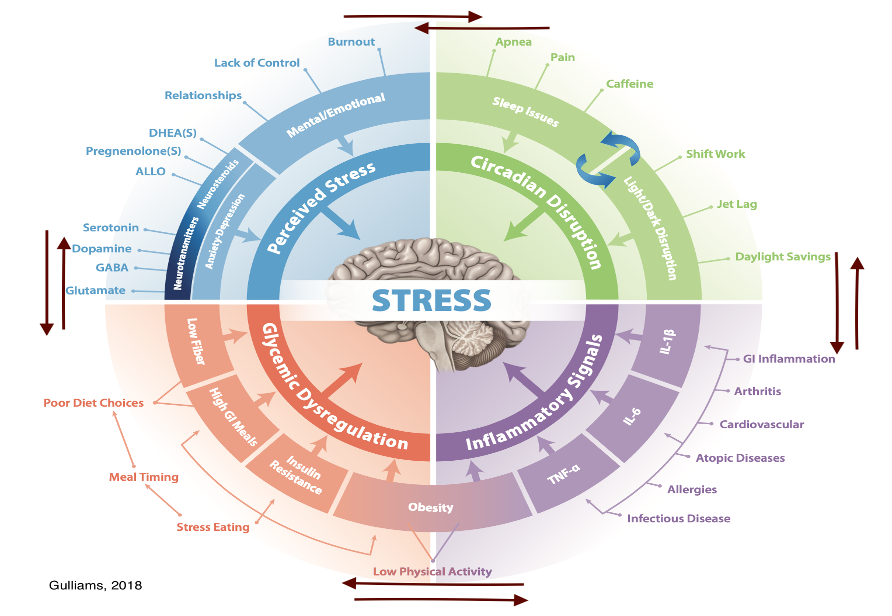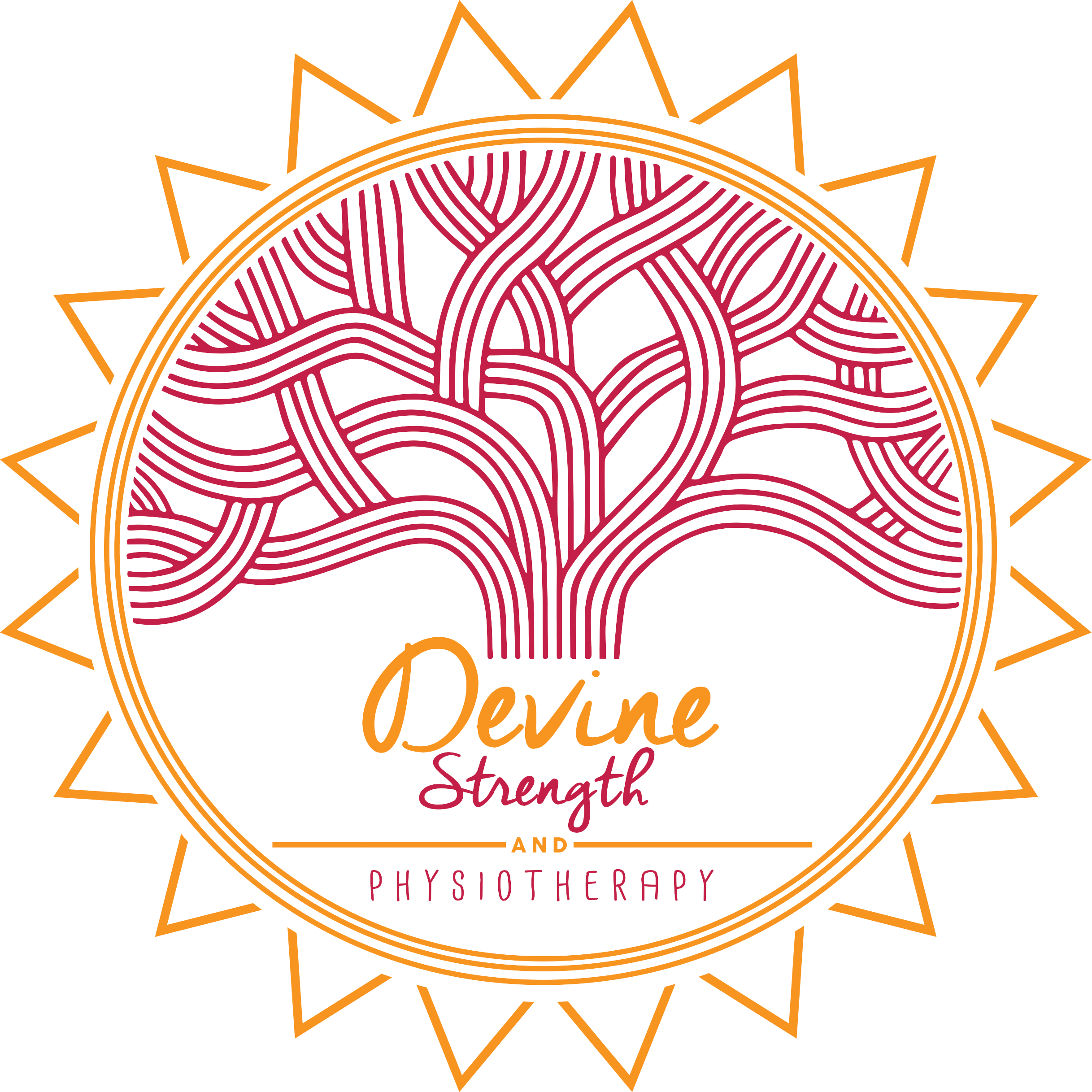We featured some fantastic information the past few months on what can be categorized, in the below diagram, as perceived stress. Stress is a psychological, environmental, or physiological threat to homeostasis. The diagram below categorizes 4 major contributors to a stress response in the body. The more stress events going on, over a longer period of time, the more the brain is going to communicate with the body that it feels threatened.

We’ve also talked about how sleep disturbances (green quadrant) influence cortisol levels and create more stress, as well as how stress and specifically cortisol can create sleep disruption. Read more about that HERE if you want a little more information about that.
Jess featured a great series on the trauma response, which is the blue category of perceived stress (perceived implies more internal to our worldview rather than un-real/made up). We learned what aspects of our lives need to be rearranged to better communicate a practice of restorative rest. Sometimes this means identifying behaviors commonly seen with microtraumas and macrotraumas especially during our formative years, that have created an “inflammatory” mindset – one that contributes to whether we perceive a lot of threat to our homeostasis or not.
Another load of stress on the body is inflammation, the purple quadrant. One of the hormones released from the long term stress response (there’s also a short term response) is glucocorticoids. You may have heard of these, or taken a form of them, if you’ve ever had a “steroid pack” or corticosteroid injection. These hormones signal a down regulation of all components of our immune system (the theory is that, prehistorically, when running for our lives, resources towards battling an internal infection are diverted towards meeting the needs for surviving the external physical threat over the internal one). So, the stress response results in a very strong “brake!” on the immune system. On the other side of the see-saw however, there are inflammatory signals from 1) viral infection 2) a simmering gut infection like parasites or overgrowth of dysbiotic bacteria (creating lipopolysaccharides), and 3) oxidative stress from excess glucose on blood vessels.
These are ALSO a threat to internal homeostasis and thus, when gone on for too long, triggers the stress management system (called Hypothalamic Pituitary Adrenal Axis).

Too much peripheral inflammation within tissues signals a threat to the internal environment, and thus the stress response system (glucocorticoids) is activated, dampening the immune response (which, pre-historically, was to keep you from dying of scarlet fever or diphtheria – even though you probably do not have scarlet fever, it’s just elevated glucose or candida overgrowth secondary to excessive metal exposure: detox capacity)
So, if excess inflammation is the problem to trigger the stress/cortisol response, then adopting dietary changes that minimize inflammation and getting checked for metal or chemical exposure are important root cause steps to initiate. There are certain herbs and natural compounds that are effective in minimizing the pro-inflammatory state. These are turmeric, resveratrol, omega 3 fatty acids, and quercetin.
There are mushrooms that also have a strong anti-inflammatory effect including reishi, chaga, lion’s mane, and turkey tail. These are nutrients that can be taken to minimize the effects of inflammation, while the individual is getting guidance for the root cause of their imbalance. Check out Dr Jake’s information on how he uses these mushrooms in a medicinal fashion to support his body’s resilience to stress!

